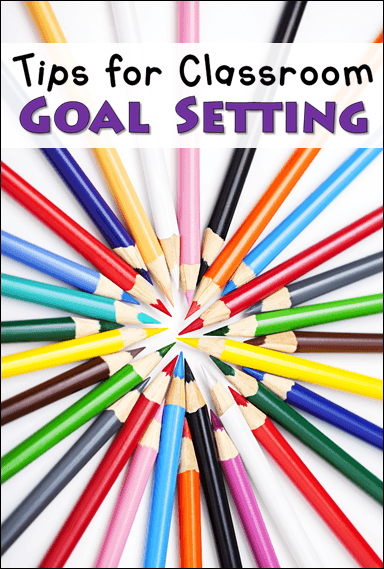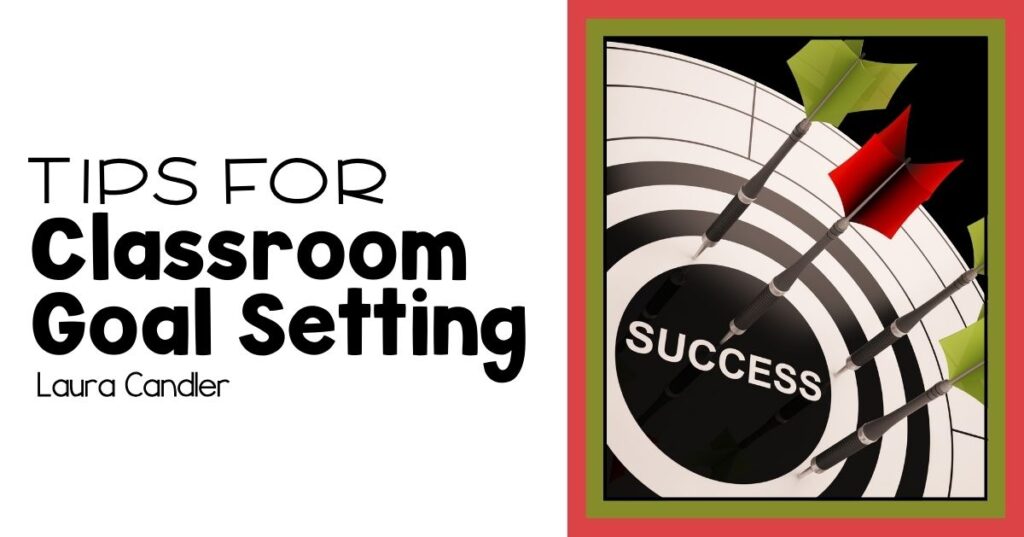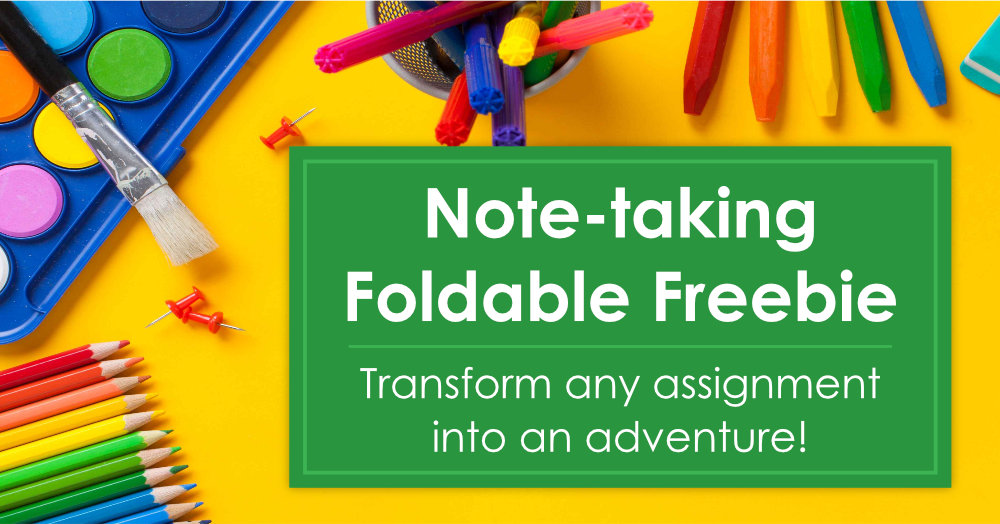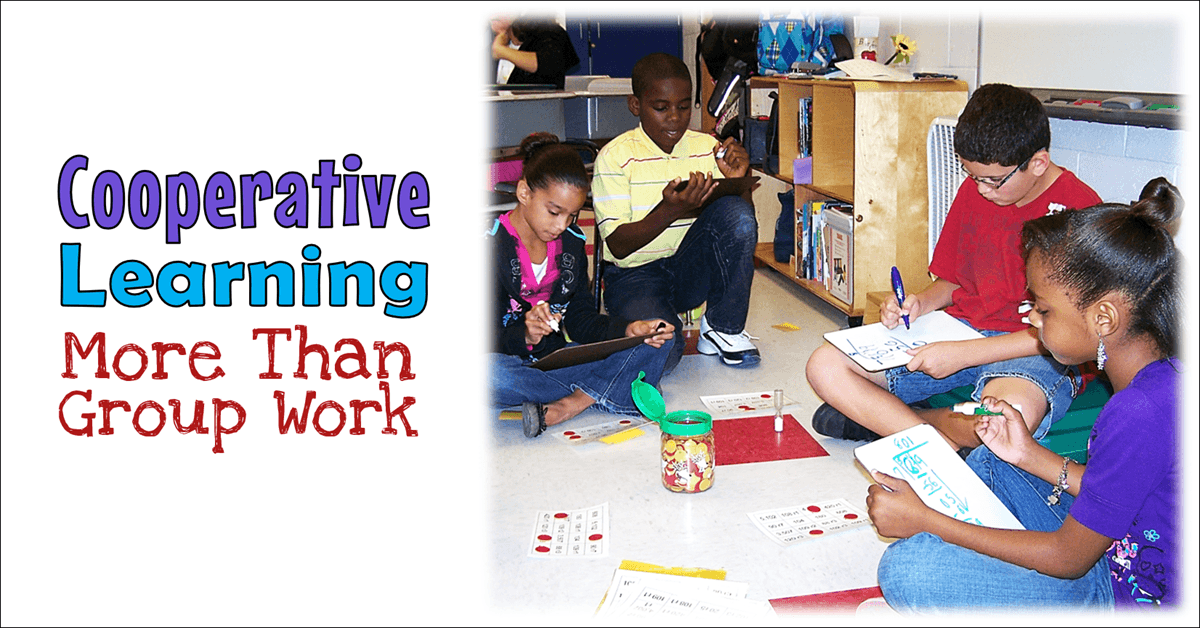Goal setting is a powerful process for bringing about change. Identifying what you want and mapping out a plan of action helps you achieve your dreams, both personally and professionally. The same is true for students. Since the goal-setting process can be unfamiliar and challenging, I’d like to offer a few tips, a freebie, and some additional resources for teaching these skills to students. You can find even more strategies in Classroom Goal Setting.
Now’s the Time to Review and Set Goals
Sometime in January many of you may be ending one grading period and starting another. This is a perfect time for students to reflect on the goals they set earlier and to set goals for the new grading period. When I was teaching, this was the time of year that students reviewed their grades and quarterly test results, they identified which goals they had met. Next, they wrote goals and action plans for the upcoming grading period.
Sounds simple, right? Unfortunately, it wasn’t quite as simple as it sounds! The process may seem easy, but it’s a concept that takes time to develop. I explained the process in great deal Classroom Goal Setting, but I want to share a few more tips and tricks to help make things even easier.
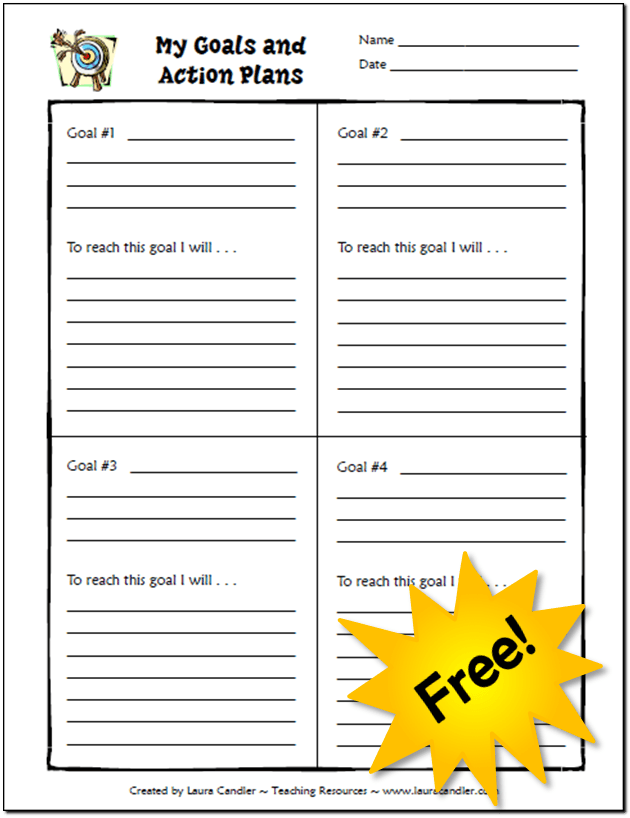
Tips for Teaching Goal Setting
- Record Goals and Action Plans – After explaining the difference between a goal and an action plan, guide your students through the process of writing their own goals and plans. Use this one-page My Goals and Action Plans freebie as a place for them to record their ideas.
- Academic & Personal Goals – Along with goals for grades and attendance, students can set goals for things they want to achieve or accomplish at home. Ask students to set at one personal goal and three academic goals for themselves.
- Baby Steps – Don’t expect students to complete the entire form at one time. Break the lesson up into 4 small chunks. Have them write one goal and a set of action plans each day. Or write all 4 goals one day and all 4 action plans the next.
- Conferring – Allow time to confer individually with students who are struggling to write goals and action plans. After students write one goal and action plan, collect their papers or journals to review. Many students will need additional guidance and it’s best to identify those students early in the process. The single page form makes it easy for you as the teacher to review your students’ goals and discuss them during individual conferences.
- Track Progress in a Journal – If you are interested in a more elaborate method of tracking goals and assessing progress each week, you’ll want to check out Tracking My Goals, my new kid-friendly journal for elementary students. You can use this journal after students complete the one page form with their goals and action plans. I recently created an extensive set of journal pages that you can mix and match to create your own custom journal for your students. See below for details.
- Review Goals and Check Progress Frequently – After they transfer their goals to a journal, set aside a few minutes each week for them to review their goals and track their progress.
- Grading Tips – It’s not necessary to grade this activity, but there’s nothing wrong with considering this to be a writing lesson and grading their work accordingly. I didn’t grade what my students choose as goals, but I did grade them on how well they followed directions and the amount of detail in their action plans. They seem to put more thought and effort into the activity if I made my expectations clear and if I treated this as a regular assignment.
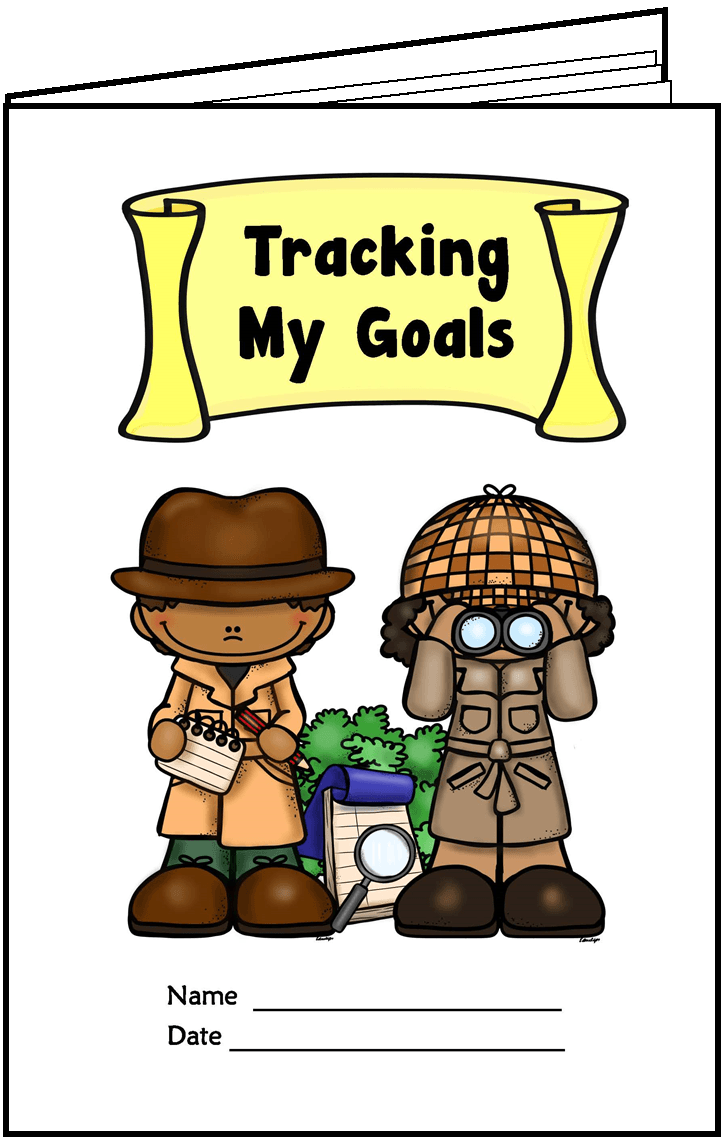
Ready-to-use Student Journals
Student journals are extremely effective for recording goals and reflecting on progress. Even elementary school students can set goals and track their progress when given the right tools and guidance.
I recently created a small half-page journal called Tracking My Goals as a companion to my Classroom Goal Setting book. This mini pack includes directions for assembling the journal and 20 different options for journal covers and pages. You can mix and match to create a journal that meets the needs of your students. To preview all the page options, click here. I also have a version for older students called My Goal Tracker that’s available on TpT.
When I first created this item, it was just for upper elementary students. Then 1st and 2nd grade teachers asked for a primary variation, and I worked with them to create a variety of additional pages. Now you can choose between two different cover styles and over a dozen inside pages to create your own customized journal!
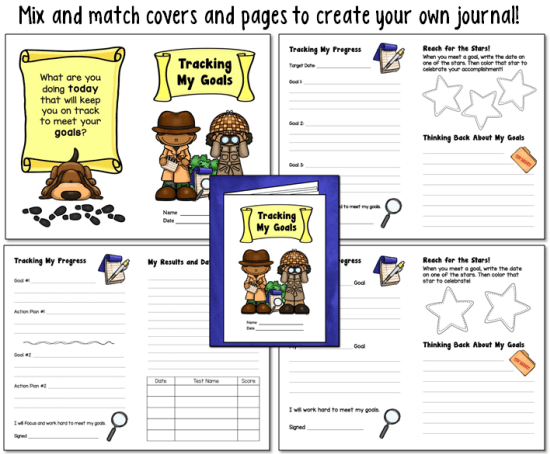
More Goal Setting Resources
A few years ago, Education World asked me to write an article about goal setting. I had so much information to share that this one article turned into a series of three articles called Goal Setting 101. They’re a great place to start if you want to know more about the goal setting in the classroom. Goal setting is a powerful process. What greater gift can we give our students than to share this process with them? I hope these resources will help!

